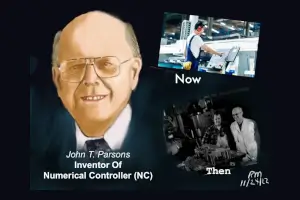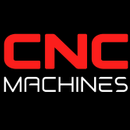Who Invented CNC Machines? The History of Computer Numerical Control from the Beginning

Who Invented CNC Machines? The History of Computer Numerical Control from the Beginning
CNC (Computer Numerical Control) machines have transformed the manufacturing world, enabling unprecedented precision, automation, and efficiency. But where did CNC technology originate—and who were the pioneering minds and companies behind its development?
This article explores the origin of CNC machines, the visionary inventors, and the key milestones that shaped the CNC industry into what it is today.
🛠️ Who Invented CNC Machines?
The invention of CNC machines can be traced back to the 1950s at the Massachusetts Institute of Technology (MIT). The original inventor of CNC was John T. Parsons, a Michigan entrepreneur and engineer, widely credited as the "Father of CNC."
👨🔧 John T. Parsons – The Father of CNC
In the late 1940s, John T. Parsons recognized the need for a more automated and precise way to create complex parts—especially for the aerospace industry. He envisioned a system that would use punch cards and numerical data to control machining equipment automatically.
Parsons worked closely with the U.S. Air Force, which funded his idea to improve the manufacturing of helicopter blades. His collaboration with MIT would give rise to the first true CNC machine.
🧠 The MIT Servomechanisms Laboratory & Richard Kegg
To bring Parsons’ idea to life, the Air Force contracted the MIT Servomechanisms Lab in 1949 to develop the concept further.
Key Contributors:
- John T. Parsons – Visionary who originated the idea of using numerical control
- Frank L. Stulen – Parsons’ assistant, helped develop mathematical concepts and coordinate programming
- Richard Kegg – Engineer at MIT who led development of the first operational NC (Numerical Control) machine
In 1952, MIT completed the first NC milling machine—a modified Cincinnati Hydrotel punch-tape-controlled mill that could cut complex 3D shapes with precision guided by numerical data.
This machine was the prototype that laid the groundwork for the modern CNC machine.
🏭 First Companies to Commercialize CNC
Following MIT’s success, several companies helped bring CNC technology into mainstream manufacturing:
1. Giddings & Lewis (Wisconsin, USA)
One of the first manufacturers to integrate NC into production machines for military and aerospace use.
2. Cincinnati Milling Machine Company
Provided the physical machine tool used in MIT's first NC prototype. Later became a leader in adapting CNC to milling equipment.
3. Kearney & Trecker
Early adopters and innovators of CNC technology for horizontal machining centers.
4. GE (General Electric)
Developed the first digital CNC controller systems in the 1960s, helping move away from analog tape-based systems.
📈 Key Milestones in CNC History
| Year | Milestone |
|---|---|
| 1949 | John Parsons and Frank Stulen propose numerical control for machining blades |
| 1952 | MIT completes first prototype NC milling machine |
| 1958 | First commercial CNC machines hit the market |
| 1970s | Development of computer-based control systems (true "CNC") |
| 1980s | Rapid growth in CNC adoption across automotive and aerospace industries |
| 1990s–2000s | Introduction of multi-axis machining, CAD/CAM integration, and PC-based controllers |
| Today | AI, IoT, and cloud-powered CNC machining are pushing boundaries further |
💡 Why CNC Changed the World
Before CNC, machining relied heavily on manual skill and handwheels. With CNC:
- Precision skyrocketed—complex geometries and tight tolerances became achievable
- Repeatability improved—every part is exactly the same
- Efficiency increased—machines run faster with fewer human errors
- Automation expanded—enabling lights-out machining and unmanned operations
Today, CNC machines are used in every major industry—aerospace, medical, automotive, defense, and more—thanks to the vision of early pioneers like Parsons and institutions like MIT.
🔚 Conclusion: From Vision to Revolution
CNC machining is one of the most transformative inventions in manufacturing history. It began with a bold idea from John T. Parsons, supported by MIT’s engineering power and propelled by early machine tool companies. Together, they turned numerical code into cutting precision—and changed how the world builds.
Whether you're a machinist, shop owner, or engineer, every time you press “cycle start,” you’re standing on the shoulders of these early CNC trailblazers.


